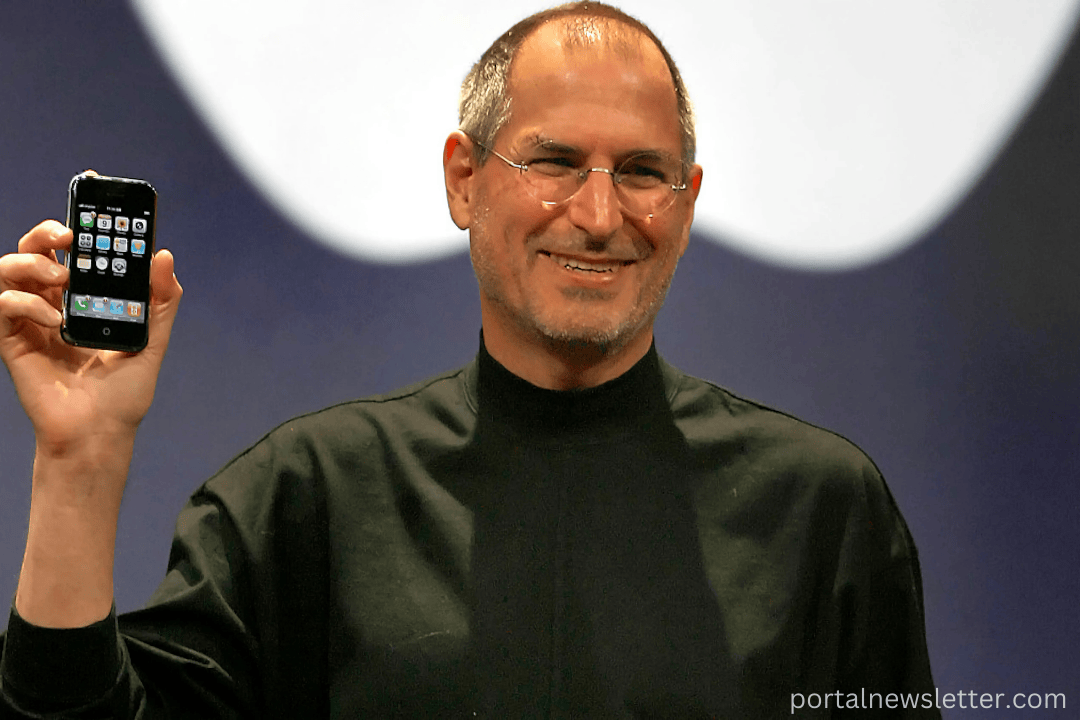Steve Jobs is undoubtedly one of the most influential figures in the history of technology. As the co-founder of Apple Inc., he revolutionized the tech industry and changed the way we live, work, and interact with the world. His visionary approach to innovation, design, and user experience has left an indelible mark on the modern digital landscape. This article delves into Steve Jobs’s life, achievements, and lasting legacy, exploring how he built Apple into a global tech giant and transformed technology forever.
Early Life and Inspiration
The Birth of a Visionary
Steve Jobs was born on February 24, 1955, in San Francisco, California. Raised in Cupertino, a city that would later become synonymous with Apple, Jobs showed an early aptitude for technology and creativity. His adoptive parents, Paul and Clara Jobs, fostered his curiosity by introducing him to electronics and encouraging his interest in craftsmanship.
From an early age, Jobs exhibited an unconventional approach to problem-solving and innovation. This mindset would later shape his vision for Apple, a company that would redefine personal technology.
College and Early Challenges
Jobs attended Reed College in Oregon but dropped out after just one semester. While this might have seemed like an unconventional choice, it was a critical moment that allowed Jobs to explore his true passions. During his time at Reed, he began taking classes that piqued his interest in design and technology, including calligraphy and typography. These seemingly unrelated subjects would later influence the sleek, minimalist designs Apple became famous for.
Jobs’ journey to founding Apple wasn’t straightforward. After leaving college, he joined Atari, where he worked as a technician on video games. It was there that he formed a lasting bond with Steve Wozniak, a brilliant engineer who would later become his partner in founding Apple.
Founding Apple and Early Struggles
Apple’s Humble Beginnings
In 1976, Jobs, Wozniak, and Ronald Wayne founded Apple Computer in a garage in Cupertino, California. Their first product, the Apple I, was a simple circuit board designed by Wozniak. The Apple I wasn’t a commercial success, but it laid the foundation for what would become one of the most valuable companies in the world.
Jobs’ vision for Apple was clear from the beginning: to create computers that were accessible, user-friendly, and beautiful. The Apple II, introduced in 1977, was the company’s first significant success, marking the beginning of Apple’s journey to becoming a leader in personal computing.
Struggles and Early Growth
Despite early successes, Apple faced numerous challenges in its early years. Jobs had a difficult time managing the company’s rapid growth, often clashing with board members and other executives. In 1985, a power struggle with then-CEO John Sculley led to Jobs’s ouster from Apple, the very company he helped create.
Though this was a difficult and painful chapter in Jobs’ life, it also marked the beginning of a new phase in his career. After leaving Apple, Jobs founded NeXT, a computer company that focused on high-end workstations for the education and business sectors. He also acquired Pixar, a small animation company that would go on to revolutionize the film industry.
The Return to Apple
A New Chapter at Apple
In 1996, Apple was struggling. Its market share had diminished, and the company was facing financial difficulties. In a bold move, Apple acquired NeXT, bringing Steve Jobs back to the company he co-founded. Jobs immediately set out to reinvigorate Apple, bringing fresh energy and ideas to the table.
One of Jobs’ first significant moves was streamlining Apple’s product line, eliminating redundant and poorly performing products. He then focused on creating a few standout products that would embody Apple’s ethos of innovation and design excellence.
The iMac Revolution
In 1998, Apple introduced the iMac, a revolutionary all-in-one desktop computer designed by Jonathan Ive under Jobs’ direction. The iMac was unlike anything that had come before it, with a bold, translucent design that emphasized simplicity and elegance. The iMac was a commercial success, breathing new life into Apple and marking the start of a series of groundbreaking products that would change the tech industry forever.
The Launch of Iconic Products
The iPod – Transforming the Music Industry
In 2001, Jobs introduced the iPod, a portable music player that would revolutionize the way people listen to music. Unlike other MP3 players at the time, the iPod had an intuitive interface, a sleek design, and the ability to hold thousands of songs. The iTunes Store, launched in 2003, complemented the iPod by providing a legal and easy way for users to buy music.
The iPod’s success catapulted Apple into the mainstream and set the stage for even more significant innovations. By 2004, Apple had become a leading player in consumer electronics.
The iPhone – Redefining Smartphones
In 2007, Steve Jobs introduced the iPhone, a product that would forever change the smartphone industry. The iPhone combined a phone, an iPod, and an internet-connected device into a single, intuitive touchscreen device. It was a revolutionary leap forward in mobile technology, setting the standard for smartphones for years to come.
The iPhone’s success was due to its hardware and software ecosystem, including the App Store. The iPhone gave developers the platform to create apps that transformed the way people used their phones, paving the way for mobile apps to become a central part of daily life.
The iPad – Changing Computing Forever
In 2010, Jobs introduced the iPad, a tablet that bridged the gap between smartphones and laptops. The iPad was an instant hit, providing a more portable and versatile way to access the internet, watch videos, read books, and play games. Like the iPhone, the iPad revolutionized the market and became a global phenomenon.
Jobs’ Vision and Leadership Philosophy

Focus on Simplicity and Elegance
One of Steve Jobs’ most significant contributions to Apple was his emphasis on simplicity and elegance. Jobs believed that technology should be intuitive and that design was just as important as functionality. He was known for his obsessive attention to detail and his insistence on perfection, qualities that drove Apple’s products to be both functional and beautiful.
Cultivating a Culture of Innovation
Jobs fostered a culture of innovation at Apple by encouraging creativity and risk-taking. He pushed his team to think differently, constantly challenging the status quo and pursuing new ideas. Jobs was known for his “reality distortion field,” a term used to describe his ability to convince others to believe in seemingly impossible ideas.
Jobs’ leadership style was both inspiring and demanding. He held himself and his employees to high standards, which led to both incredible success and moments of intense pressure. Nonetheless, his relentless pursuit of excellence helped shape Apple into the powerhouse it is today.
The Legacy of Steve Jobs
Apple’s Global Impact
Steve Jobs’ legacy extends far beyond the products he created. Under his leadership, Apple became one of the most valuable companies in the world, with a market capitalization surpassing $2 trillion in recent years. Jobs’ influence can be seen in virtually every aspect of modern technology, from smartphones and tablets to personal computers and wearable devices.
A Lasting Inspiration
Even after Jobs died in 2011, his impact on technology continues to be felt. His visionary approach to product design, his focus on user experience, and his ability to inspire others to think differently have left a lasting mark on the tech industry. Apple continues to be a leader in innovation, regularly introducing new products that push the boundaries of what’s possible.
Frequently Asked Questions (FAQs)
Who is Steve Jobs, and why is he important in tech history?
Steve Jobs was the co-founder of Apple Inc. and a visionary entrepreneur who revolutionized the tech industry. His work in creating products like the iPhone, iPad, and iMac transformed personal computing, mobile technology, and entertainment, making him one of the most influential figures in modern history.
How did Steve Jobs start Apple?
Steve Jobs co-founded Apple in 1976 with Steve Wozniak and Ronald Wayne. They created their first product, the Apple I, in a garage in Cupertino. The company’s breakthrough came with the Apple II, a personal computer that helped establish Apple as a leader in the emerging tech industry.
What are some of Steve Jobs’ most significant contributions to technology?
Jobs is known for leading the development of iconic products such as the iPod, iPhone, and iPad, which transformed music, mobile communication, and computing. His vision for integrating hardware and software seamlessly revolutionized the user experience in tech, making products more accessible and intuitive.
What was Steve Jobs’ leadership style at Apple?
Steve Jobs’s demanding leadership style emphasized perfectionism and innovation. He was known for his “reality distortion field,” where he inspired his team to push beyond perceived limits. His intense focus on design, simplicity, and user experience shaped Apple’s culture and product success.
How did Steve Jobs’ return to Apple impact the company?
After being ousted from Apple in 1985, Jobs returned in 1996 when Apple was facing financial struggles. He streamlined the product line, introduced innovative new products like the iMac, and reinvigorated the company’s culture of creativity. His leadership ultimately saved Apple and positioned it for explosive growth.
What role did Steve Jobs play in the development of the iPhone?
Steve Jobs played a pivotal role in conceptualizing and bringing the iPhone to market. He envisioned a device that combined a phone, an iPod, and an internet communicator into one device. The iPhone revolutionized the smartphone industry and set new standards for mobile technology, influencing the way we interact with technology today.
How did Steve Jobs influence the design of Apple products?
Steve Jobs was deeply involved in the design of Apple products, emphasizing simplicity, elegance, and functionality. Under his leadership, Apple products became known for their sleek, minimalist designs, intuitive user interfaces, and seamless integration of hardware and software.
What is Steve Jobs’ legacy in the technology industry?
Steve Jobs’ legacy is marked by his groundbreaking innovations in personal technology and his ability to create products that are both beautiful and functional. Apple continues to lead the tech industry, and Jobs’ influence can still be seen in the company’s culture, product designs, and technological advancements. His focus on creating a seamless user experience and his role in transforming multiple industries have made him an enduring icon.
Conclusion
Steve Jobs was more than just the co-founder of Apple; he was a visionary who transformed the technology industry and the way we live. Through his relentless pursuit of innovation, Jobs created products that not only changed the way we interact with technology but also altered the course of history. His legacy continues to shape the future of technology, and his impact will be felt for generations to come.


